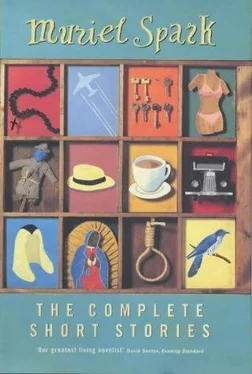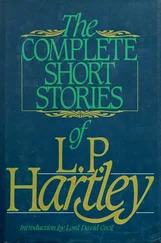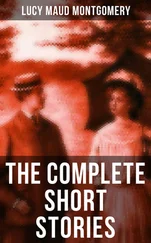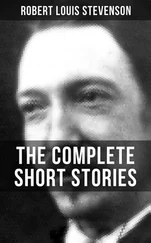‘Who were these people?’ I inquired.
‘Oh they are the noble relations of the late Baron de Dogherty,’ said the owner. ‘These photographs were on the walls of his study. No great interest except for the frames. He was very well connected, of course, so perhaps historians …’
I bought the pictures without the frames for a price which was too high, although, according to the owner, it was too low; the usual thing.
On examination by a photographic expert, and comparison with the photos that had not been stolen, it was plain they had been re-photographed with those fake ensignia, about which Damian had been a real expert, tricked in. He had also learned something from his marriage to that Peruvian photographer; it had not been a total loss. But this was what he had lived for: the Order of Henry the Lion, the Order of the Starry Cross, even the Order of the Red Flag …
I love these fake pictures, all of them. But my favourite is that of my mother’s cousin, slim Mrs Henderson, in profile, stooping, not to examine her sewing machine, but to enter her superimposed Rolls. And standing by the door of the car is the superimposed chauffeur, her dream of a lifetime come true.
The Hanging Judge
‘The passing of sentence,’ wrote one of the newspapers, ‘obviously tried the elderly judge. In fact, he looked as if he had seen a ghost.’ This was not the only comment that drew attention to Sir Sullivan Stanley’s expression under his wig and that deadly black cap required by British law at the time. It was the autumn following the lovely summer of 1947. The yellow and brown leaves scuttled merrily along the paths in the park.
It had been Justice Stanley’s lot to condemn to death several men in the course of his career — no women, incidentally, but that was due to the extreme rarity of women murderers. Certainly, no one would have suggested that Sullivan Stanley would hesitate in the case of a woman to pronounce the words, like a tolling bell, ‘that you be taken from this place … and that you be there hanged by the neck until you be dead’. (And, almost as an afterthought, ‘May the Lord have mercy on your soul.’)
The man in the dock was in his thirties, good-looking, as respectable a person in appearance as might be found briskly crossing the street outside the Old Bailey where the trial was taking place. He was George Forrester, perpetrator of what were known to the radio-listening and newspaper-reading public of those days as ‘the mud-river murders’.
Sir Sullivan Stanley’s facial expression throughout the trial had been no different from his expression at any other time or in any other trial. He invariably gave the impression that he was irritated by the accused —especially in one notable case where a man had pleaded guilty and refused to be persuaded by his own counsel or anybody else that ‘guilty’ and ‘not guilty’ were mere technicalities, that in fact to plead guilty dispensed more or less with the trial. In no previous case, then, had the press remarked on this expression. Sir Sullivan had loose, spaniel-like jowls and looked the age he was and as annoyed as he was. But ‘something seemed to come over the Justice,’ wrote another reporter. ‘He was plainly shaken, not so much when he heard the foreman of the jury pronounce the word “guilty” as when he put on the black cap which had been lying before him. Can it be possible,’ speculated this reporter, ‘that Judge Stanley is beginning to doubt the wisdom of capital punishment?’
Sullivan Stanley was not beginning to doubt anything of the kind. The reason for the peculiar expression on his face as he passed judgment on that autumn afternoon in 1947 was that, for the first time in some years, he had an erection as he spoke; he had an involuntary orgasm.
It was said that a man who was hanged automatically had an erection at the moment of the drop. Justice Stanley pondered this piece of information. He wondered if it was true. However that might be, he could find no connection with his own experience at passing sentence. But whenever, throughout the months and years to come, he thought about this case, he felt an inexplicable excitement.
The murderer, George Forrester, had stayed, as everyone knew, at the Rosemary Lawns Hotel in north London. It was there he had met the last of his victims, and the discovery of her body and the clues he furnished led to the other bodies. During the course of the trial, Justice Stanley had by way of a working scruple deliberately gone to look at the hotel from the outside. It was small, private, moderately priced, refined, and did not seem to deserve the two policemen who stood outside the entrance during the trial to keep the press and other intrusive elements from bothering those few remaining guests who had not packed up and fled as soon as the mud-river murder case hit the headlines.
In court, the manager gave evidence. A man of good presence, aged thirty-five, direct and frank, he impressed Justice Stanley in inverse proportion to the contempt the judge felt for George Forrester, the man at the bar. Justice Stanley usually despised the accused on some account or other quite distinct from the facts of the case. This time, it was the bright brown, almost orange, Harris tweed coat that the prisoner wore, in addition to his rusty-brown little moustache.
In 1947 George Forrester managed to murder three women in one year. Before that, he had no criminal record whatsoever. He was a commercial traveller in fishing tackle and gear, and apparently, according to his frightened and helpless wife, was in the habit of going off fishing in rivers throughout the country, wherever he happened to be at the end of a working week. His victims, three in all, were discovered shot in the head among reedy marshes where he had been seen wearing waders, plying his rod.
The three victims had in common that they were large, overweight women, widowed and middle-aged. George Forrester met them all in medium-priced genteel hotels where the guests had a fixed arrangement. His object was to rob the women of their jewellery and the contents of their handbags, and this he did in all three cases. The last case, that of Mrs Emily Crathie, was the one for which he was tried before Justice Stanley. An interesting feature of the case was that George Forrester claimed to have had sex with Mrs Crathie before bringing her to her muddy death among the reeds, although the forensic evidence argued against any sexual activity.
George Forrester admitted that he had offered Mrs Crathie ‘a day out fishing’. She occupied the next table to his at the Rosemary Lawns Hotel. This had been noticed by the manager and his wife and also by some of the other permanent clients. Her sudden absence was also noticed and, after a few days, reported to the police, no relatives being known.
In Mrs Crathie’s case the killer had been obliged to transport her body, minus her considerable diamond solitaire ring and other possessions, from his car to a part of a river in Norfolk where the reeds and banks were thicker than at the equally tranquil spot where he had killed her by pistol shot in the back of the head. The other two women had been killed and concealed in much the same way, but in the case of Mrs Crathie it was a mystery, never to be explained by the investigative brains of England, how George Forrester, a slight man, had managed to convey massive Mrs Crathie from her death place to his car and from his car to her grave among the reeds.
The hue and cry for the three missing women was afoot when George presented himself at a Norfolk police station with a mud-stained size-42 full bra, claiming he had fished it up when trying out his tackle on some water stretch of the county. The police interrogated George Forrester who, according to psychological explanations, had ‘wanted’ to be caught and, in fact, thus was caught. The specimen of bra had been purchased by George himself from a nearby ladies’ garments store, and, curiously, he had got Mrs Crathie’s measurement right.
Читать дальше












